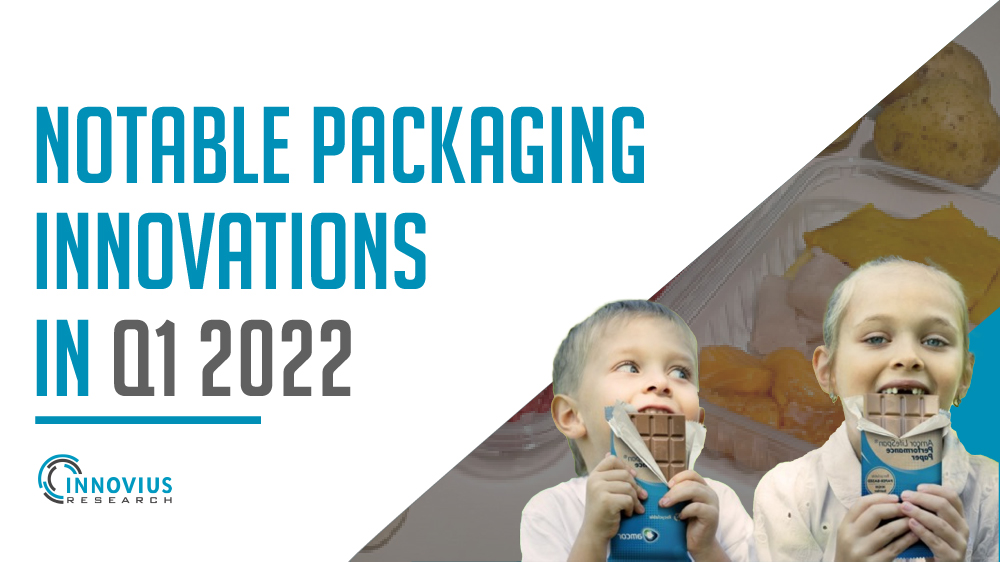
Notable Packaging Innovations in Q1 2022
“Smart packaging will not be the result of marketing, but the result of automated logistics processes on the Internet of Things,” – Peter Wippermann, Researcher.

Packaging Innovations
Packaging is becoming increasingly personalized, personal, and communicative. Sustainable packaging types such as recycled packaging, rPET, paper packaging, and metal packaging are new advancements in the packaging industry, driven by rising consumer demand for greener food packaging materials.
Paper-based packaging is becoming more popular in the sustainable market due to its versatility and low cost. Paper packaging may also be used to protect, preserve, and transport a broad variety of items.
In order to address the need for sustainable packaging, package makers have introduced recyclable materials, resulting in the adoption of a circular loop concept. In the paper packaging industry, sophisticated technical solutions have been adopted to address functional restrictions such as barrier qualities and anti-bacterial capabilities.
Smart packaging serves as an ideal “digital bridge function” between producers, merchants, customers, and social media platforms. The usage of printed electronics in the intelligent packaging industry is predicted to develop in response to the rising need for real-time traceability and the reduction of global food waste.
Recent Packaging Innovation
Some of the recent packaging innovations that took place in Q1 2022 are as follows:
1. Colgate-Palmolive had launched a recyclable toothpaste tube made from high-density polyethylene (HDPE) and is claimed to be the first tube recognized as recyclable by external recycling authorities.
2. Notpla introduced its new product Notpla Paper in collaboration with Canopy, which can be used for packaging products.
3. Amcor had launched a high-barrier, grease-resistant paper-based solution ‘LifeSpan’. It has more than 80% paper fiber content and is PVDC-free and is recyclable across most European countries.
Smart packaging is still in its early stages of development, but its potential is enormous. Although smart packaging technology is currently available in many fields, its broad deployment has so far failed due to high production costs. Researchers at the Fraunhofer Institute for Modular Solid-state Technologies (EMFT) have been working on a more efficient production method for sensory labels made of flexible silicon chips and modern films, which are joined together by a logical roll-to-roll technique.
Data Sources: Packaging World, Packaging Gateway, Dezeen,
Read more Market Reports and view Infographics.

